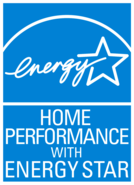EnergyPro has a team of excellent Batt Insulation installers.
So …what is Batt Insulation?
Batt Insulation is traditionally the most common the type that you see as Pink or Yellow cottony looking material sometimes with a Paper or Foil backing. That’s Fiberglass. It comes as rolls or bundles of rectangular pieces. It is inexpensive but, unless very carefully installed, it can be quite ineffective. As in, “you get what you pay for”. The problem is that if air is flowing through insulation, it reduces its effectiveness … think – comfortably wearing a sweater in the Winter and then the Wind kicks up. Insulation is most frequently Trapped Air, air in pockets that do not move. When it moves it doesn’t work well. Since it comes as rectangles, it does not necessarily fit well in the framing of a house. Ask a Carpenter or Builder; there are no perfect rectangles in framing so there will always be gaps.
There is another common type of Batt Insulation called Rock Wool or Mineral Wool. It is created from a combination of stone and recycled slag – a by-product of steel production that would otherwise go to landfill. It is much denser than Fiberglass so air does not travel through it as easily. It is “press fit” into framing so “perfect rectangles” are not as much a problem. Besides providing thermal insulation from exterior conditions, it is also an excellent Sound Reduction and a Firestopping material. The most common brand, Roxul, calls one of their products AFB – Acoustic Fire Batt.
In all cases with air permeable insulation like Batts, Air Sealing is critical (See: Air Sealing). The less air that is trying to go through the material, the better it will work. There are solutions to Air Sealing framing before installing Batts.




